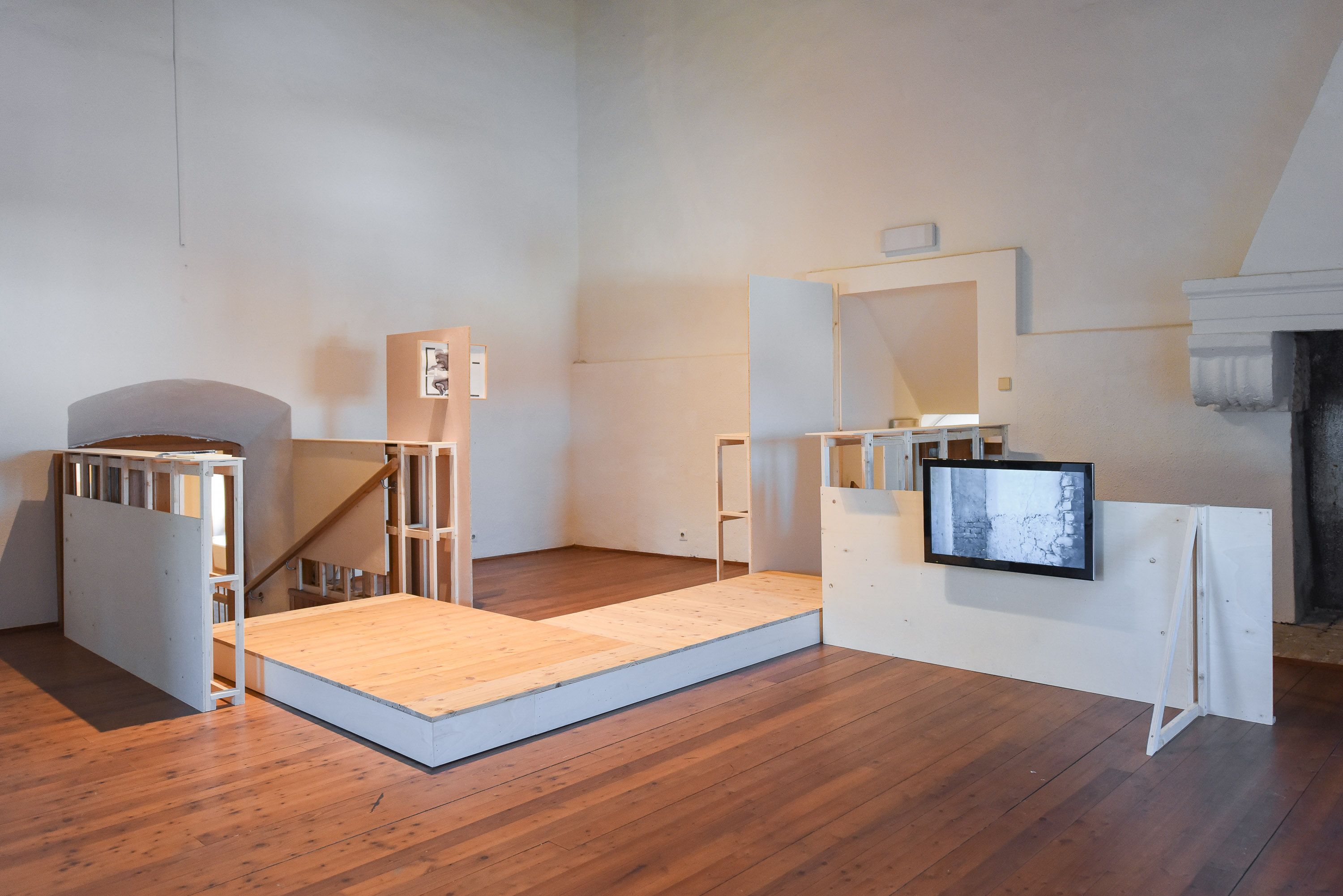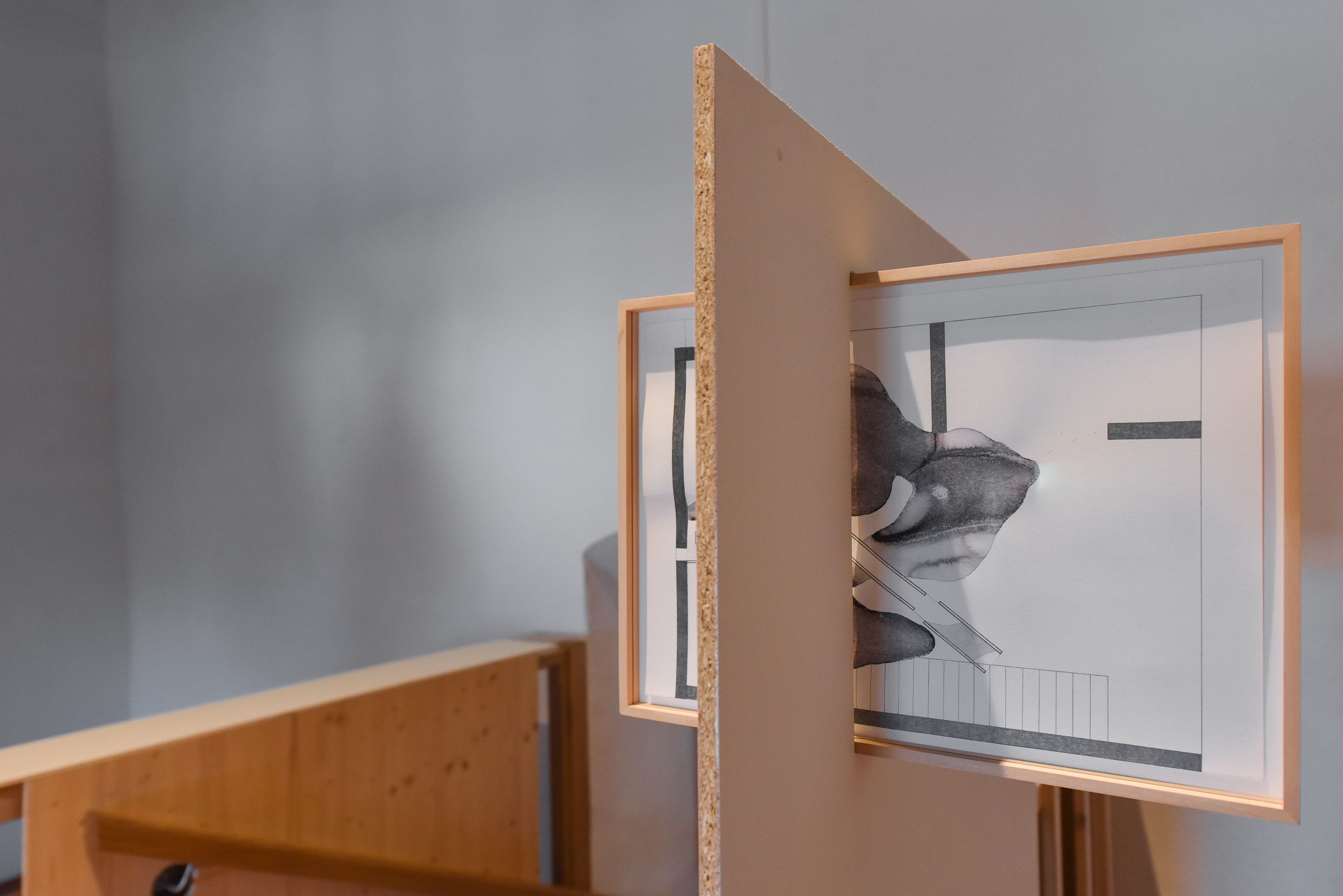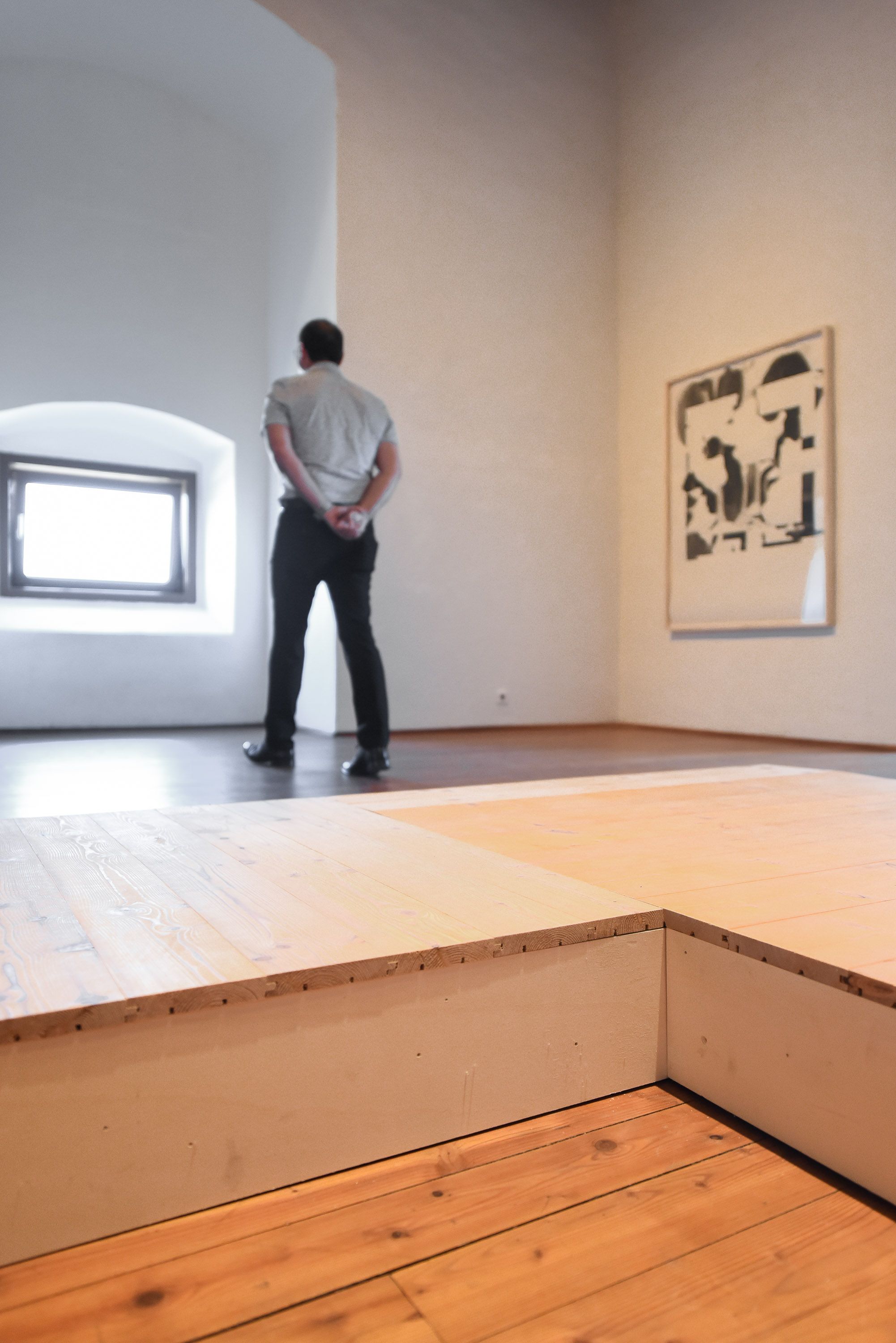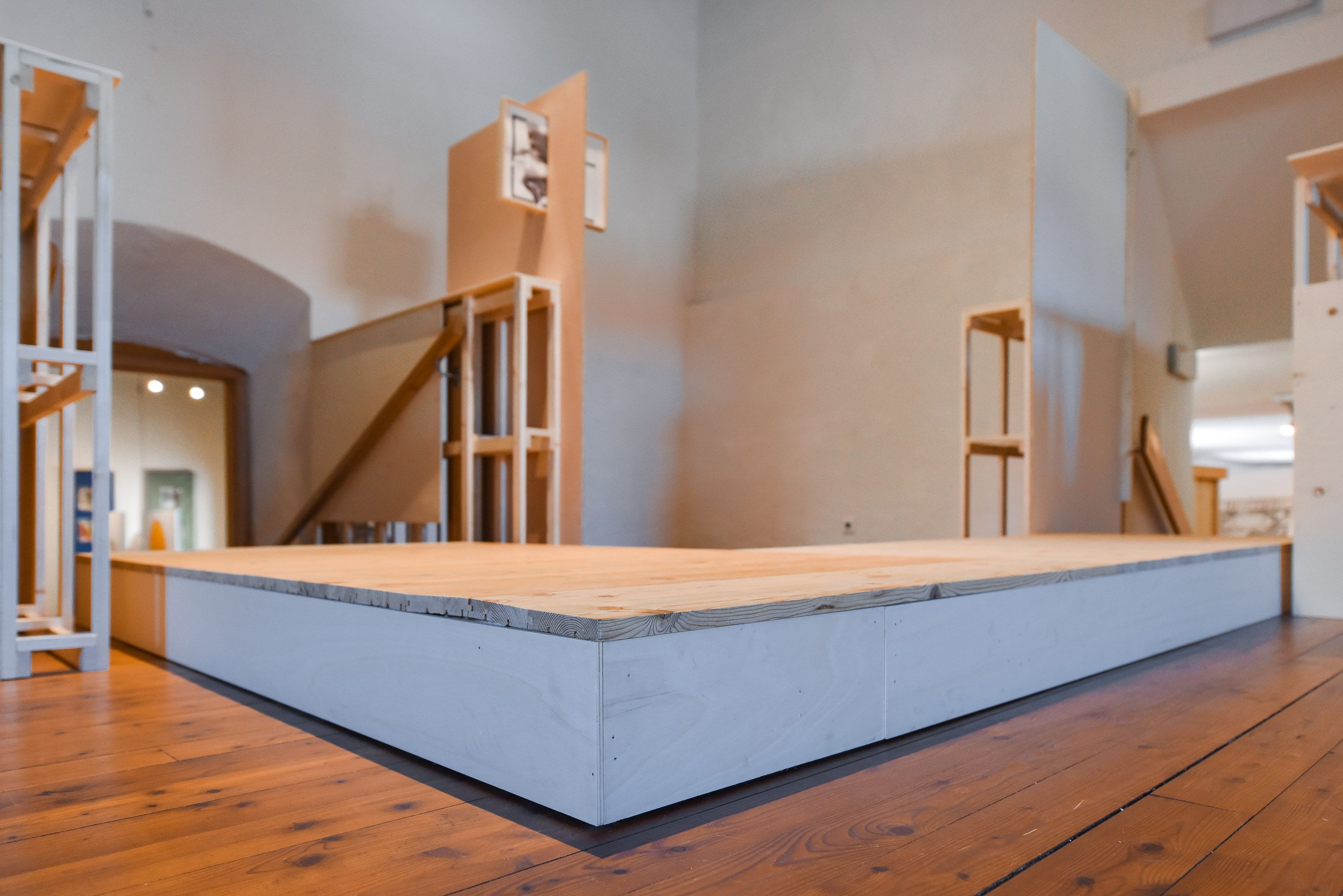Karl-Heinz Klopf
:
Eine Stufe mehr (One More Step)
Back
Information
A tower room with an open fireplace in a thousand-year-old castle: the location of the installation Eine Stufe mehr (One More Step) easily invites romantic clichés, like in a fairy tale. Yet while Karl-Heinz Klopf may also play with a cliché—that of the haunted castle—the focus of his project lies somewhere else entirely.
His starting point was the acknowledgement that historical buildings like Orth Castle have undergone architectural changes over the centuries through additions. In other words, this building ultimately represents a conglomerate of layers that remain visible as sediments of earlier times, as if looking at an archaeological excavation. Based on this idea, Klopf focused on the tower room, which has an unusual layout and structure, designing another layer that enables us to look at the room in a new way. He connected two entryways that are cater-corner to each other with a walkway that leads visitors through the room as if they were on a catwalk, taking them up one more step. The handrails of the stairs going up and down were encased in a framework that is open in places, leaving the elements visible underneath. Panels that are mounted along the walkway and next to the framework provide spaces for further exhibited objects: two drawings from his Land Works series, as well as the video work Attic Mystery Tour. Besides another collage hanging on the wall, the rest of the artistic intervention takes place along the construction that was developed on-site.
Through this installation and by highlighting details (handrails) and particular aspects (the stairs), the artist raises our awareness of the architectural elements in the castle. He directs our gaze toward its fundamental structure with the help of these added details. It is also worth mentioning that he is interested in the functionality of these additions. Eine Stufe mehr is thus a reflection on space, time, and function in architecture.
The drawings from the Land Works series serve this context well in that they also represent a meditation on spatial structures and the distribution of planes in space. As before, layers can also be recognized here. The artist cut different forms out of an ink landscape that dried naturally and swapped these with their exact counterparts from other places on the piece of paper. This special montage technique is reminiscent of traditional handicrafts like marquetry. The artful, decorative inlaying of different types of wood on a flat surface also refers to Klopf’s family background. The trades of his parents—his mother was a seamstress and his father was a carpenter—had a deep impact on him, and he learned about the many different cutting techniques early on.
In general, Klopf’s work deals with our built environment, the city, and the public realm. Several of his film works are devoted to extraordinary individual buildings. In 2013, he made the film Tower House in which he portrays a Japanese, avant-garde concrete building by honing in on its central stairwell, turning while going up the stairs with a rotating camera. The stairwell connects all six floors of the building, which has a very small ground plan. In the film TESTA, on the other hand, Klopf explores the National Library of Argentina in Buenos Aires—an iconic, brutalist concrete building designed by Clorindo Testa—by focusing on its outer shell. Furthermore, in the film A Tropical House, he follows the individual concrete elements in the private home of the Indonesian architect Andra Matin.
Klopf rarely shows an entire scene in total view, a shot that is based on a subjugating gaze. Rather, his pictures focus on details and things that seem minor—on the parts that as a sum constitute the whole. He moves with his camera along the architectural logic and inner structure of the buildings, combining these with the very personal views of their inhabitants, who can be heard in the voiceover. This preference for fragment over total view seems like an affirmation of a world that can never be regarded as final. It is continuously moving forward, and things and we ourselves are constantly subject to change. In this sense, the site-specific installation for Orth Castle also acknowledges that the focus of Klopf’s view lies outside of the mainstream.
Let me add something important. Along with humor, I would say that it is typical for Klopf’s approach to break with the consistency of an idea. This is especially clear in the fantastic video Attic Mystery Tour, which places the attic of Orth Castle in center stage. The attic is several hundreds of years old and is a part of the building that encompasses several floors. No one has seen it like in this video before. Resembling a retro explorer in a time-travel movie, Klopf sends a camera drone to fly over the wooden beams of the attic under the gable. The drone starts above the tower room and flies over and between the beams crossing the attic to the second tower, where it turns around and comes back. What makes us shiver is not only the actual dust of time on this somewhat ghostly expedition or the friendly ghost of the castle; it’s the odd perspective of the camera eye within the mechanical device that presupposes the presence of humans as a marginal factor. In an essay from 1996 in which he discusses the culture of remembrance and the landing of the Allies in Normandy in June 1944, Paul Virilio wrote about the “industrialization of forgetting” by which he meant the deluge of media coverage of this event. The drone’s perspective, which delves into layers of history and sees everything without providing a context, reminds me of the ghostly speed with which we forget historical events because they are simply industrially destroyed by our media and online excesses.
Patricia Grzonka
[1] Paul Virilio, “The Avant-Garde of Forgetting,” in A Landscape of Events (MIT Press, Cambridge/MA, London, 2000 (1996)).
Contributors
- Kuration
Images (4)




